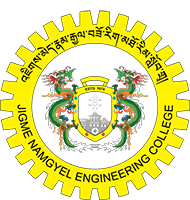Japan East Asia Network of Exchange for Students and Youth (JNESYS) organized by Japan International Cooperation Centre (JICE) was a ten days program which started from 17th January to 27th January 2016. The program included delegates from seven SAARC nations, our country Bhutan, Sri-Lanka, Nepal, Afghanistan, Maldives, Pakistan and Bangladesh. The objectives of JENESYS 2015 were:
- To promote mutual trust and understanding among the people of Japan and Asian countries
- To promote a global understanding of Japans society, history, diverse culture, politics and foreign policy
- To convey information on Japan and experience acquired through the program to the general public of the participants home countries through the participants of this project.
Tokyo is the capital of Japan, as well as a center of politics, economics and information. The public transportation system is very well developed. High rise buildings and urban districts are highly visible, but small corners with rows of traditional houses still remain in the mountain areas of Tokyo.
We reached Japan on 17th of Jan. where we were received by Ms. Yuki; Bhutan’s coordinator. We were directly taken to the Tokyo city and honestly, we were fascinated at the very first moment by all those tall beautiful buildings and the hi-tech transportation system. Many of us know that Japan is very famous for its animations. And one of the most famous is the “One Piece”. We visited the Tokyo tower also called the One Piece tower and through this we were shown “The Cool Japan”. We were accommodated in different hotel such as Shinjuku New City Hotel, New Sunpai Tochigi, Hotel Kagetsu and Hotel EAST21 Tokyo.
Since, this program was mainly energy based; we visited places like Shibaura Water Reclamation Centre. It was started in 1931 and it is the third oldest water reclamation center in Tokyo. This plant collects water from the office buildings, households and treated into clean water. The treated water is discharged to Tokyo Bay. After the sand filtration, some treated water is used for cleaning the facilities, cooling some machines and flushing toilets in the reclamation center. After the further treatment by ionization, some water is supplied to the neighboring buildings for flushing toilets. The sludge is treated at Nambu Sludge Plant.
We visited Ariake Incineration Plant, the waste disposal plant of Tokyo. The Clean Authority of TOKYO has been operating waste incineration plants in 23 wards in Tokyo; treating waste from ordinary households and offices. At the same time the authority treats incombustible and bulky waste and sewage. In the 23 wards area of Tokyo, approximately 3 million tons of waste are treated every year. We were also taken to some local industry, the Toshen Co. Ltd, Tokyo and Nakagawa Aquarium. They also showed us the traditional Japan by taking the delegate to Edo-Tokyo Museum and a very beautiful Zen Temple (Zen Dera). By visiting the Panasonic Centre Tokyo/RiSuPia, we experience the cutting edge technology of Japan. Panasonic Centre Tokyo is a Corporate Global Communication Hub for Panasonic established in September 2002. It includes employing natural energy sources such as solar and wind power, the effective use of rainwater, and the adoption of an energy management system. The center is very much friendly to both environment and to the community.
The program also included a school exchange program. We visited Teikyo University, Utsunomiya campus where we experienced some of their classes and also shared some conversations with the students. They have various courses such as Arts, Economics, Science and Engineering, Medical Technology. Through this school exchange program, we experienced the similarities and differences between the youths of our countries.
The most interesting program was the home stay. During the home stay program, we the delegate were grouped into a member of two to three and then send to different households. We spent two nights and a day with Japanese ordinary family. We shared some space and time with host family and they treated us as their own family members. It deepened our understanding on life and sense of values of Japanese. It was an opportunity for us as well as for them to share our culture and tradition through our national dress and Bhutanese made food. It was one of the most memorable and unforgettable moments in our life. Hence, we experienced the beauty of Japan in terms of nature, technologies to protect and preserve the environment and the love and care that lie among the communities.
Though Japan is one of the most technologically developed countries in the world, it is also a country which is committed to environmental protection. The two things which inspired us the most are, firstly, though Japan has some of the finest architectural structures like Tokyo Sky tree; Tokyo tower, the Tokyo metropolitan office buildings, etc., it also contains the traditional Japanese houses in the city. Then the next is the hospitality of the Japan. Despite their busy life, everywhere you go, people greet you very pleasantly with a smile-the smile that makes you feel that you are at home.
These ten days program was like a dream where a wonderer wonders in a wonderland. We learned so many values- the values which we can apply in our real lives. After visiting Japan, I realized that our country Bhutan lacks in so many fields such as education facilities, technical facilities and most of all human values. We have so many things to discover and explore in our life. So many opportunities to make our life reach to the next level of success and this program was one of the golden opportunity, to share our knowledge and experience for our world, and for the future. It has made us realize the value of life and what we can really do in our “LIFE”. It was really worth seeing once than hear thousands times about Japan. Therefore, I would like to sincerely thank our college for this opportunity and hope more opportunities would come in future.

